|
© Eric R. Pianka 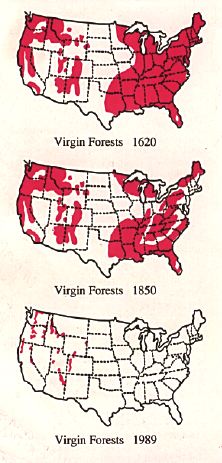 Recently, Ruddiman
has proposed that human activities,
primarily deforestation, began to alter atmospheric carbon dioxide and methane levels
many centuries ago, long before the industrial revolution. If so, global warming may not be
a recent development but may have begun nearly 100 centuries ago with the advent of agriculture.
The figure at the left shows how rapid deforestation was in the United States. The figure below
shows a section (one square mile) in Wisconsin from 1831 to 1950.
Recently, Ruddiman
has proposed that human activities,
primarily deforestation, began to alter atmospheric carbon dioxide and methane levels
many centuries ago, long before the industrial revolution. If so, global warming may not be
a recent development but may have begun nearly 100 centuries ago with the advent of agriculture.
The figure at the left shows how rapid deforestation was in the United States. The figure below
shows a section (one square mile) in Wisconsin from 1831 to 1950.
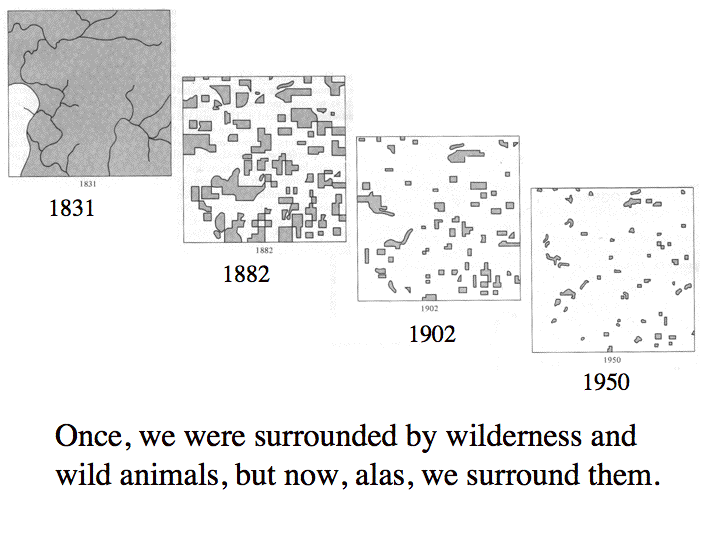
When humans first arrived, that square mile was heavily forested with a just a little piece of prairie in the southwestern corner. The prairie burned every year (prairie fires) and over the centuries the prairie built up deep black top soils, which are nourishing our nation today. The first thing settlers did was cut down the trees as you can see. In a little over a century, this was turned into tiny wood lots. Imagine the effects this must have had on whatever used to live in that forest. 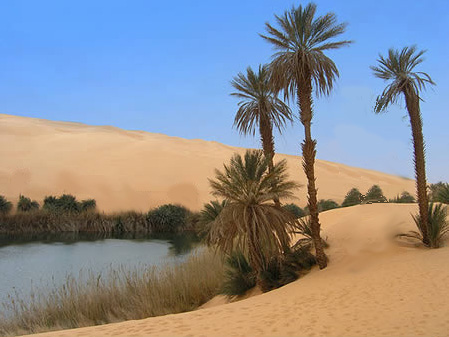 Out in the middle of nowhere in Northern Africa in the Sahara desert is an
oasis that once had three big palm trees. It was called 'Tres Arboles' in Arabic
(I say 'Tres Arboles' because you might speak Spanish). But somebody
cut those trees down, so although it is still on the map and it's still an
oasis, there aren't any trees out there anymore. One cold night, a selfish
human cut them down and burned them to stay warm.
Out in the middle of nowhere in Northern Africa in the Sahara desert is an
oasis that once had three big palm trees. It was called 'Tres Arboles' in Arabic
(I say 'Tres Arboles' because you might speak Spanish). But somebody
cut those trees down, so although it is still on the map and it's still an
oasis, there aren't any trees out there anymore. One cold night, a selfish
human cut them down and burned them to stay warm. 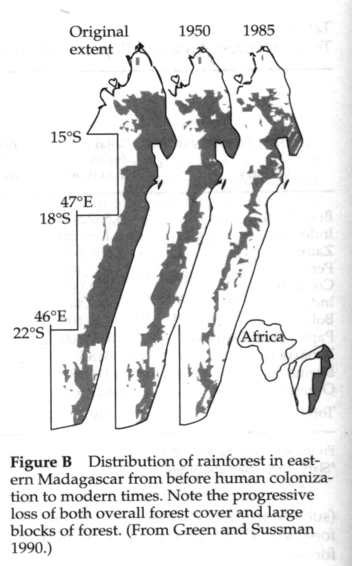
Madagascar is one of the places that I want to go before I die because it has so many endemic species -- it split off from mainland Africa a hundred million years ago and it's got all kinds of creatures (including many exquisite lizards) that are found nowhere else on the earth. Yet, the people of Madagascar are third-world, starving, over-populated, eating everything. An endangered land tortoise in Madagascar is highly protected on the world's list of "don't do anything to this turtle," but they are commonly made into turtle soup by poor indigenous people in Madagascar. 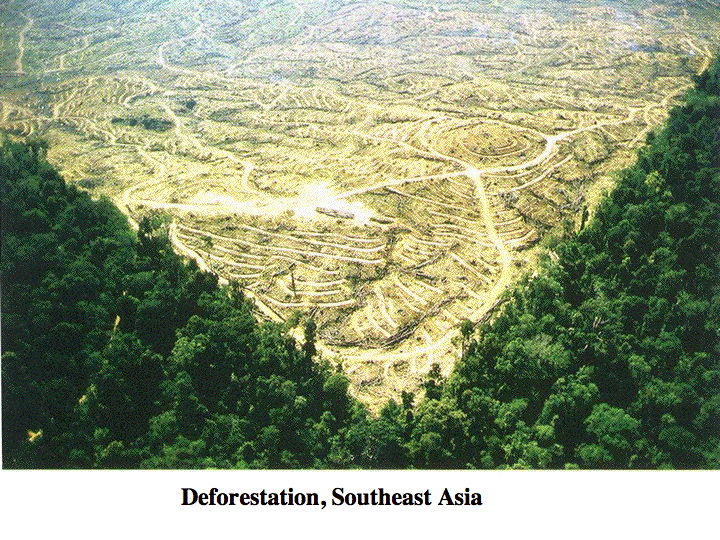
Here's an example from Borneo. This is what we are doing to this planet. Wood has become extremely valuable and we're clear-cutting anything that's left. 
One of the problems with habitat fragmentation core habitat is lost. In that Wisconsin scene back in the 1830s before humans got there, only a little tiny bit of edge habitat existed between the prairie and the forest. Cowbirds lived along that edge. Cowbirds are brood parasites. They lay their eggs in nests of other birds. Cowbirds used to be very scarce in North America -- with habitat fragmentation, their populations have boomed and the only place that small songbirds like warblers can lay their eggs now to get away from these parasitic cowbirds is deep in the forest. When only tiny little patches remain, a small songbird simply cannot escape from cowbirds. Now cowbirds are very abundant, small songbirds are heavily parasitized and their populations are on the brink of going extinct because of our clearing and habitat destruction and fragmentation. 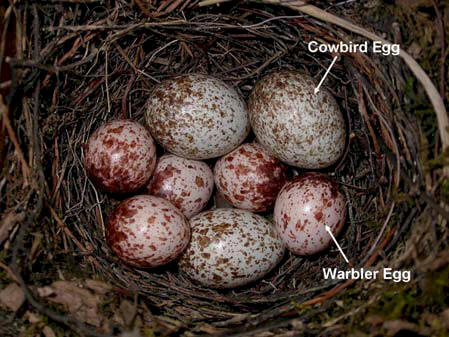
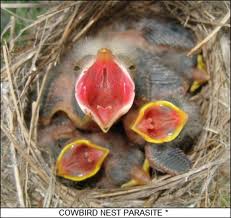
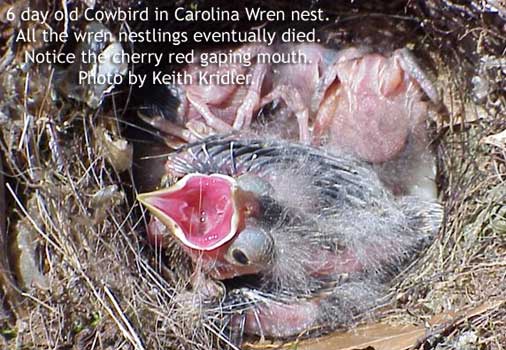
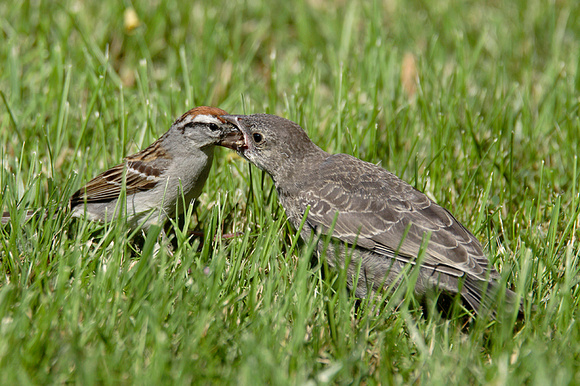
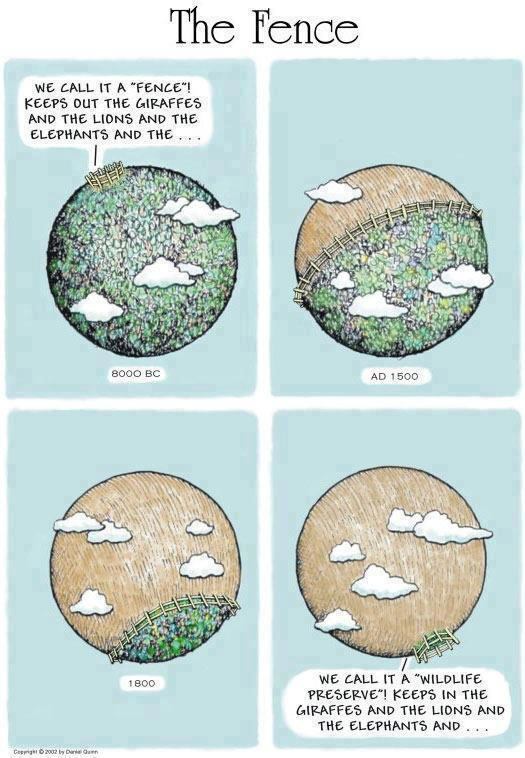
Links: Watch Domino Effects Oreskes, N. and E. M. Conway 2014. The Collapse of Western Civilization: A View from the Future, Columbia University Press. |
Last updated 2 December 2012 by Eric R. Pianka